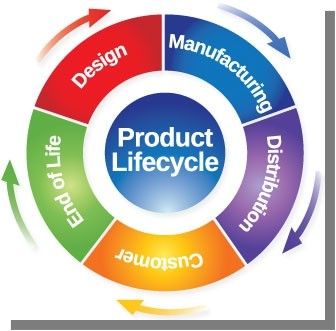Consistent product data, holistic processes, and an integrated document management system - that’s SAP ERP PLM - Classification and Variant Configuration for you. Presenting the results of most product development processes to represent strategic business capital; this SAP sub module manages product development processes in a professional manner. Along with its application to new product lines, it also impacts all necessary change processes in the lifecycle of a product.

SAP Product Lifecycle Management (PLM)-Functions and Support
The SAP Product Lifecycle Management (PLM) offers optimum support for all users in this discipline - in the case of both internal development processes and inter-company co-operation with customers, engineering services, and suppliers alike. The functions of SAP ERP PLM that integrate with its sub module ‘Classification and Variant Configuration’ include:
- Development project control: resource, gateway, assignment, deadline as well as project portfolio management;
- Project archive and document administration;
- Management of bills of material and parts master data;
- Integrated change management (series switches, development statuses);
- Variant configuration;
- Data sharing platforms, and so forth;
SAP Variant Configuration (VC) Master Data
Capable of being distributed across diverse Clients /Systems in an organization using the ALE functions of SAP, SAP Variant Configuration (VC) Master Data is fast becoming an indispensible tool in the hands of all users.
Master Data contains the under mentioned objects:
- Classes
- Characteristics and Values
- Variant Table Contents
- User Defined Functions
- Object Dependencies (Pre Conditions/ procedures, Selection Conditions)
- Dependency Nets
- Configurable Materials
- Configuration Profiles
- Bill of Materials
- Variant Table Structures
- User Interface
Message Types in VC Master Data:
Characteristics and Values: Typically, most objects connected with variant configuration are reliant on characteristics; this makes it essential for the characteristics to be transferred first.
Classes: The characteristic assignments are also transferred when the ALE distribution of classes takes place. The Message Type used here is CLSMAS.
Variant Table Structure: The variant table structures that are created to support the maintenance of data required for variant configuration. VTAMAS is the Message type used for transferring Variant Table Structure.
Variant Table Contents: The table contents are transferred only after the above step is taken care of. VTMMAS is the Message Type for the purpose.
The list of Message Types for other user defined functions, Object dependencies, Constraint Net, configurable materials, configuration profiles, user interfaces, Super BOM and so forth can be understood easily too, and go a long way in helping the cause of SAP professionals.
Variant Configuration - Best Practices
The primary objectives of best practices are:
- Easy understanding and use of the system design;
- Quick solutions for problem solving;
- Reduction of time for product development (new) by reusing VC Objects;
- Easy data transfer processes through ALE, And so forth.
The best practices that are followed while implementing the projects related to SAP Variant Configuration in various industries include:
Easy Naming Convention
In the case of hi-tech manufacturing companies, it is indeed a challenge to maintain the different elements of Variant configuration (VC) and its Master Data. As a best practice, the use of prefixes in naming conventions makes the task less daunting; for instance, VCH_XX_CHARNAME. In a similar vein, naming conventions are maintained in the case of user interface designs, dependencies, configuration profiles, variant tables and other features of variant configuration. Standardized naming conventions lead to easier maintenance of Master Data, faster accessibility to data using reports, accuracy checks of data before being passed on to the production client, easy identification of the dependency type, and so forth.
So, are you ready to experience and integrate the many advantages of SAP ERP PLM – Classification and Variant Configuration in your organization?